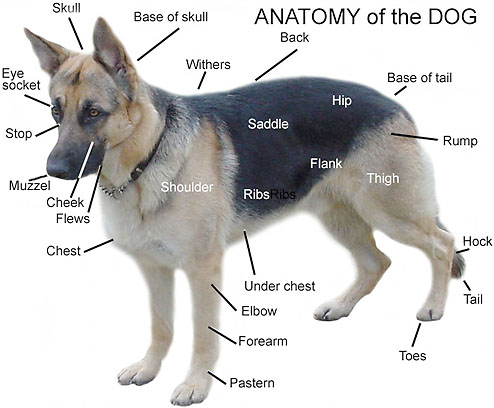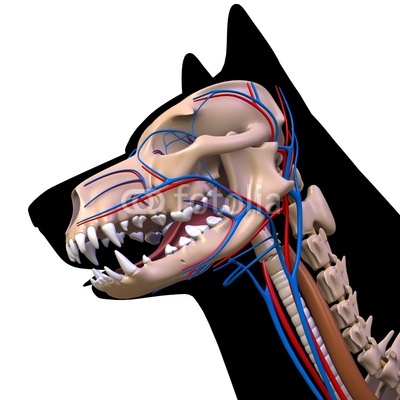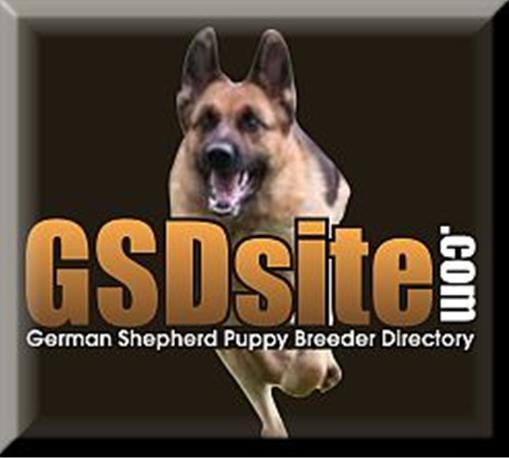The
German Shepherd (Alsation) History
The German Shepherd breed is the
world's top guard, police and military dog. Known for working
overtime, this dog often goes beyond a nine-to-five workday. Besides
being a leading working dog, the German shepherd is an excellent
family pet and leading show competitor. Also called Alsatians in some
parts of the world, the German shepherd dog is a large-sized breed
originating in Germany. The German shepherd breed was first developed
for sheepherding. Because this breed is known for its loyalty
protective nature, intelligence and strength, it's one of the most
common registered breeds in the world.
Ancient
Dogs
Although they weren't yet called
German shepherds, dogs of this type have been popular since ancient
times. Early man depended on dogs with superior vision, hearing and
running abilities, and gave these dogs food, shelter and protection
in exchange for their hunting skills. However, as man advanced from
nomadic wanderings, he needed these pastoral dogs for protection from
predators, as well as hunting and herding skills for tending flocks.
The
First German Shepherd Society
As transportation and communication
improved, societies for owners of herding dogs formed to help owners
breed dogs and keep records. Societies for breeds grew where owners
met to discuss the strengths and weaknesses of particular dogs in an
effort to improve breeding. The Phylax Society was formed in 1891 as
the first formal club, although it only lasted about three years.
However, this first German shepherd club planted the seeds for future
German shepherds societies to emerge.
Captain
Max von Stephanitz: Father of the Breed
Captain Max von Stephanitz is
recognized as the father of the German shepherd breed. Admiring the
breed's fine qualities of strength, intelligence and other assets,
von Stephanitz visited a dog show in 1899 in Karlsruhe, Germany. Von
Stephanitz not only bought a dog but also created a society. This
marked the German shepherd as a specific breed. The original name of
"Deutsche Schaferhund" is a translation meaning "German
shepherd dog."
German
Shepherds in World War I
The German shepherd was first used
by the government in World War I. Besides serving as messenger dogs,
the breed proved to be excellent in rescuing and guarding. American
servicemen and others from the United Kingdom and the Commonwealth
witnessed the bravery of the breed, its steadfastness and
intelligence. They took various stories about these dogs back home.
This led to many servicemen buying German shepherds as personal pets
following their military careers.
Name
Changes to Alsatian Wolf Dog
At the close of World War II, the
breed changed its name to the Alsatian Wolf Dog, from the area known
as Alsace-Lorraine of the German-French border. Because the dog is
related to the wolf, this caused unfounded criticism of its
hypothetical treachery and intensity. However, the breed is easily
trainable.
Names
Changes Back to German Shepherd
Later the tag of "Wolf Dog"
was dropped, fearing the label of "wolf " might create
discrimination against the breed. The name was changed back to German
shepherd in 1977, after several campaigns by breeders. It continues
to be known by this name in America, Australia and most other
countries.
Modern Breeding
The
German Shepherd breed is the world's top guard, police and military
dog. Known for working overtime, this dog often goes beyond a
nine-to-five workday. Besides being a leading working dog, the German
shepherd is an excellent family
pet and leading show competitor. Also called Alsatians in some parts
of the world, the German shepherd dog is a large-sized breed
originating in Germany. The German shepherd breed was first developed
for sheepherding. Because this breed is known for its loyalty
protective nature, intelligence and strength, it's one of the most
common registered breeds in the world.
Ancient
Dogs
Although
they weren't yet called German shepherds, dogs
of this type have been popular since ancient times. Early man
depended on dogs with superior vision, hearing and running
abilities, and gave these dogs food, shelter and protection in
exchange for their hunting skills. However, as man advanced from
nomadic wanderings, he needed these pastoral dogs for protection
from predators, as well as hunting and herding skills for tending
flocks.
The
First German Shepherd Society
As
transportation and communication improved, societies for owners of
herding dogs formed to help owners breed dogs and keep records.
Societies for breeds grew where owners met to discuss the strengths
and weaknesses of particular dogs in an effort to improve breeding.
The Phylax Society
was formed in 1891 as the first formal club, although it only lasted
about three years. However, this first German shepherd club planted
the seeds for future German shepherds societies to emerge.
Captain
Max von Stephanitz: Father of the Breed
Captain
Max von Stephanitz is recognized as the father of the German
shepherd breed. Admiring the breed's fine qualities of strength,
intelligence and other assets, von Stephanitz visited a dog show in
1899 in Karlsruhe, Germany. Von Stephanitz not only bought
a dog
but also created a society. This marked the German shepherd as a
specific breed. The original name of "Deutsche Schaferhund"
is a translation meaning "German shepherd dog."
German
Shepherds in World War I
The
German shepherd was first used by the government in World War I.
Besides serving as messenger dogs, the breed proved to be excellent
in rescuing and guarding. American servicemen and others from the
United Kingdom and the Commonwealth witnessed the bravery of the
breed, its steadfastness and intelligence. They took various stories
about these dogs back home. This led to many servicemen buying
German shepherds as personal pets
following their military careers.
Name
Changes to Alsatian Wolf Dog
At the
close of World War II, the breed changed its name to the Alsatian
Wolf Dog,
from the area known as Alsace-Lorraine of the German-French border.
Because the dog is related to the wolf, this caused unfounded
criticism of its hypothetical treachery and intensity. However, the
breed is easily trainable.
Names
Changes Back to German Shepherd
Later
the tag of "Wolf Dog" was dropped, fearing the label of
"wolf " might create discrimination against the breed. The
name was changed back to German shepherd in 1977, after several
campaigns by breeders. It continues to be known by this name in
America, Australia and most other countries.
Modern Breeding
The
modern breed has been the target of criticism for veering away from
von Stephanitz's original theory that German shepherds should be bred
mainly as working dogs. Critics contend that careless breeding has
caused defects and diseases. Breeding programs under von Stephanitz
were bred out. However, modern breeding lacks controls on genetic and
breeding problems, including hip dysplasia, temperament and
weaknesses.
Temperament:
How a German Shepherd Behaves.
German Shepherd
puppies are alert, curious, confident, and eager to please. They are
an obedient breed, courageous, loyal and brave. They learn quickly,
love their human companions, and are protective and generally wary of
strangers. When properly trained and socialized from a young age,
German Shepherds can be good with all members of the family - human,
canine and non-canine.
Strengths
and Skills: What German
Shepherds Do Best.
German Shepherds are
working dogs belonging to the Herding group. They have strong
inherent skills and are extremely intelligent. This obedient breed is
eager to learn and makes an excellent family companion, guard dog,
and service animal. They have long been used in military activities,
search and rescue operations, and as police dogs. German Shepherds
have strong tracking abilities and are one of the most trainable
breeds.
Care and Training:
The Best Environment for the German Shepherd German Shepherd puppies
can live well in apartments if given enough daily exercise, including
frequent walks and plenty of play and free run time, but they do best
when they have a dedicated fenced yard in which to expend energy.
They require consistent leadership and obedience training early in
life to illicit optimum behavioral traits. These intelligent and
confident dogs need challenging activities and inventive play or
task-oriented training to remain healthy, mentally and physically.
German Shepherds are somewhat heavy shedders, requiring daily
brushing.






























